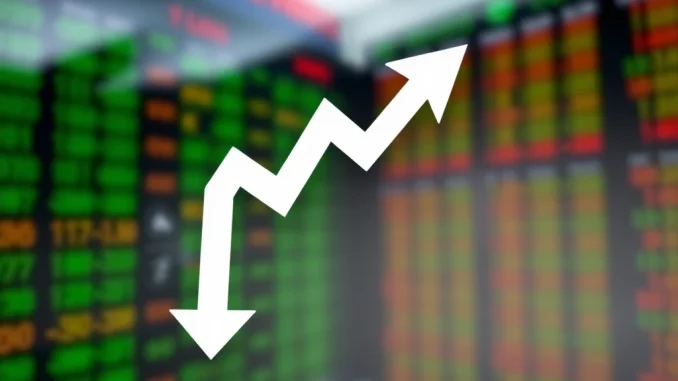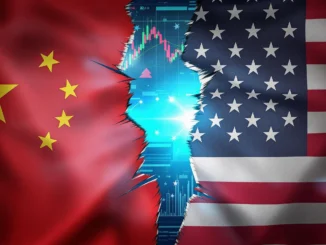
Hold onto your hats, crypto enthusiasts! The winds of economic policy might be shifting, and it could mean significant changes for the digital asset landscape. Federal Reserve Chairman Hammack has just dropped a major hint: rapid interest rate cuts could be on the table if economic growth takes a hit and inflation cools down. For those watching the volatile crypto markets, this news could be a powerful signal.
Decoding Hammack’s Hint: What Fed Rate Cuts Could Mean
Let’s break down what Fed Chairman Hammack actually said and why it matters. In recent statements reported by Odaily News, Hammack emphasized a critical balancing act. He acknowledged that the Fed’s current restrictive monetary policy – characterized by higher interest rates – is essential to combat stubbornly high inflation. However, he also pointed to a potential pivot. Here’s the crux of it:
- Conditional Rate Cuts: Hammack explicitly stated that if economic growth weakens and inflation eases, the Fed is prepared to cut interest rates. This isn’t just a vague possibility; it’s a clear signal that the Fed is closely monitoring economic indicators and is ready to act.
- Speed Matters: The mention of “rapid” rate cuts is particularly noteworthy. It suggests that if the economic conditions warrant easing, the Fed might not opt for a slow, gradual approach. A swift series of rate cuts could inject liquidity into the markets much faster.
- Balancing Act: Hammack highlighted the tightrope walk the Fed is on. High inflation paired with sluggish growth is a challenging scenario. It requires careful calibration of monetary policy to avoid either letting inflation spiral out of control or stifling economic activity too much.
- Caution First: Despite the potential for rapid action, Hammack stressed a cautious approach. He believes it’s wiser to be deliberate and avoid acting prematurely. This suggests the Fed will need strong evidence of slowing growth and easing inflation before pulling the trigger on rate cuts.
[img]Insert image URL here relating to Fed and interest rates[/img]
Why Are Interest Rates So Crucial for Crypto?
You might be wondering, “Why should crypto investors care about what the Fed does with interest rates?” The answer lies in the interconnectedness of the global financial system. Interest rates, set by central banks like the Federal Reserve, have a ripple effect across various asset classes, including cryptocurrencies.
Here’s how interest rates influence the crypto market:
- Risk Appetite: Lower interest rates generally make borrowing cheaper. This can increase the overall risk appetite of investors. When borrowing is less expensive, investors are more inclined to seek higher-yield investments, which can include cryptocurrencies.
- Liquidity Injection: Rate cuts can inject liquidity into the financial system. This extra cash can flow into various markets, including the crypto market, potentially driving up demand and prices.
- Dollar Weakness (Potentially): Lower interest rates can sometimes weaken the US dollar relative to other currencies. Since Bitcoin and many cryptocurrencies are often priced against the dollar, a weaker dollar can make these assets more attractive to investors holding other currencies.
- Inflation Hedge Narrative: While the effectiveness of Bitcoin as an inflation hedge is debated, some investors view it as a store of value that can protect against inflationary pressures. If the Fed is cutting rates due to easing inflation, this narrative might be less prominent. However, if cuts are due to growth concerns despite persistent inflation, the narrative could strengthen again.
Economic Growth Slowdown: The Trigger for Rate Cuts?
Hammack’s statements clearly link potential rate cuts to a slowdown in economic growth. But what exactly does that mean, and what are the signs to watch for?
Economic growth is typically measured by indicators like:
- GDP Growth: Gross Domestic Product (GDP) measures the total value of goods and services produced in an economy. Slowing GDP growth is a key indicator of economic deceleration.
- Employment Data: Job creation and unemployment rates are crucial. A weakening labor market, with slower job growth or rising unemployment, signals economic weakness.
- Consumer Spending: Consumer spending drives a significant portion of economic activity. Declining retail sales or consumer confidence can point to a slowdown.
- Manufacturing and Industrial Production: These sectors are sensitive to economic cycles. Decreases in manufacturing output or industrial production can indicate a broader economic contraction.
If these indicators start to show a consistent downward trend, it could signal the economic slowdown that Hammack referred to, potentially paving the way for those powerful rate cuts.
Inflation Easing: The Other Half of the Equation
Rate cuts are contingent not only on slowing growth but also on inflation easing. Inflation, the rate at which prices for goods and services are rising, has been a major concern for central banks globally.
Key inflation indicators include:
- CPI (Consumer Price Index): CPI measures the average change in prices paid by urban consumers for a basket of consumer goods and services.
- PCE (Personal Consumption Expenditures) Price Index: The PCE price index measures the prices of goods and services purchased by households. The Fed often prefers the PCE index as its primary inflation gauge.
- Producer Price Index (PPI): PPI measures the average change in selling prices received by domestic producers for their output. It can be an early indicator of inflationary pressures at the consumer level.
For the Fed to feel comfortable cutting rates, they will need to see convincing evidence that these inflation measures are trending downwards towards their target, typically around 2%.
Navigating the Uncertainty: Actionable Insights for Crypto Investors
So, what should crypto investors do with this information? Here are some actionable insights:
- Stay Informed: Keep a close eye on economic data releases, particularly GDP growth, employment figures, and inflation reports. These will provide clues about the likelihood of Fed rate cuts.
- Monitor Fed Communication: Pay attention to speeches and statements from Fed officials, including Chairman Hammack. Their commentary can offer valuable insights into the Fed’s thinking and potential policy shifts.
- Consider Portfolio Diversification: Economic uncertainty can lead to market volatility. Diversifying your crypto portfolio and potentially holding a mix of assets, including less volatile ones, can help manage risk.
- Prepare for Volatility: News about potential rate cuts, or lack thereof, can trigger significant price swings in the crypto market. Be prepared for potential volatility and manage your positions accordingly.
- Long-Term Perspective: While short-term market reactions can be intense, remember to maintain a long-term perspective on your crypto investments. Economic cycles and Fed policy changes are part of the broader financial landscape.
Conclusion: A Potentially Powerful Move on the Horizon
Chairman Hammack’s signal about potential rapid Fed rate cuts is a significant development for all markets, including the crypto space. While caution remains the Fed’s guiding principle, the door is clearly open for a shift in monetary policy if economic conditions warrant it. For crypto investors, this means staying vigilant, understanding the macroeconomic context, and preparing for potential opportunities and volatility that may arise from this powerful shift in the economic landscape. The coming months could be crucial in shaping the direction of both the traditional and digital financial worlds.



